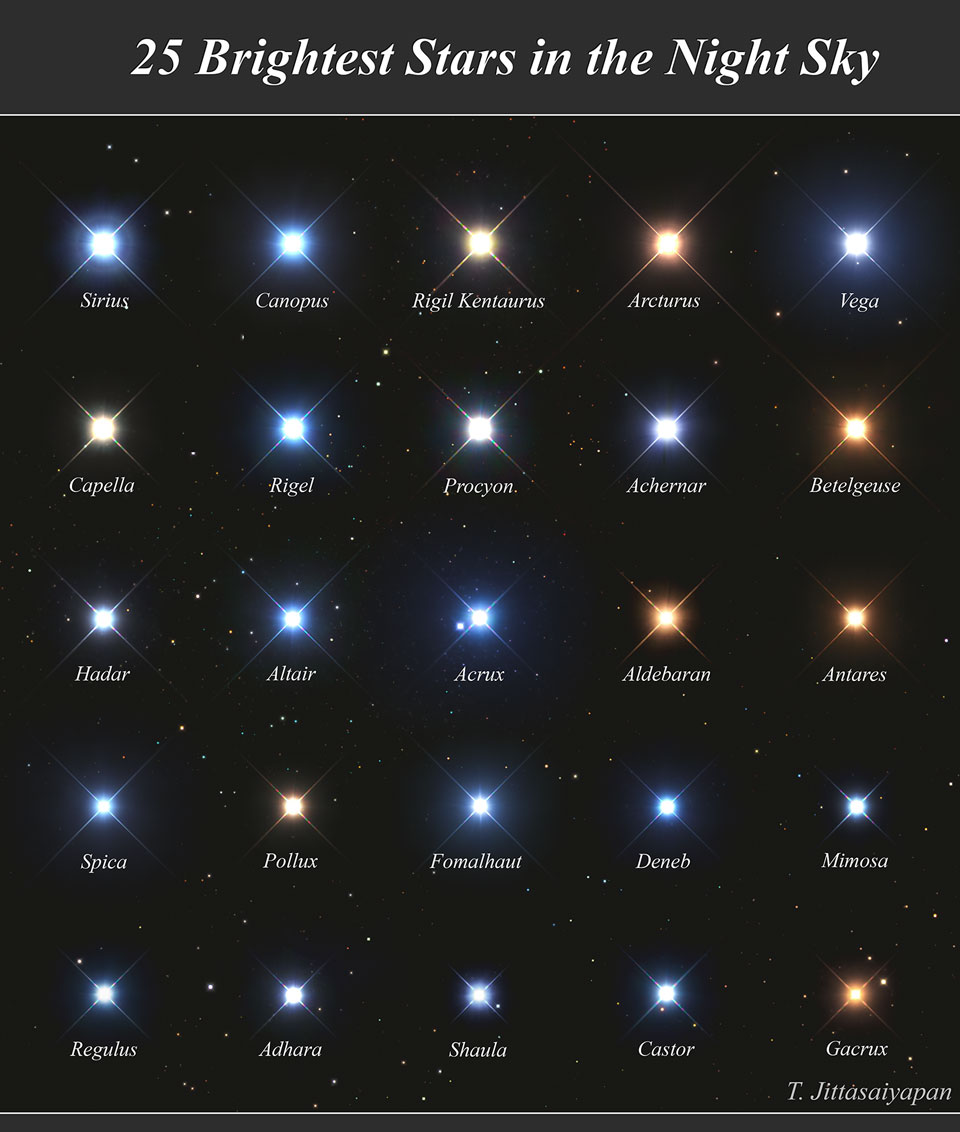
Explanation: Do you know the names of some of the brightest stars? It's likely that you do, even though some bright stars have names so old they date back to near the beginning of written language. Many world cultures have their own names for the brightest stars, and it is culturally and historically important to remember them. In the interest of clear global communication, however, the International Astronomical Union (IAU) has begun to designate standardized star names. Featured here in true color are the 25 brightest stars in the night sky, currently as seen by humans, coupled with their IAU-recognized names. Some star names have interesting meanings, including Sirius ("the scorcher" in Latin), Vega ("falling" in Arabic), and Antares ("rival to Mars" in Greek). You are likely even familiar with the name of at least one star too dim to make this list: Polaris. [NASA]
Russell
"Mother and father reverse their spectrum positions, however. The womb of the mother is on the inside and the father surrounds it by a ring, such as one sees in the Lyra Nebula. One can also see the birth of a new star in the very center of that great black cathode hole which the mother womb is. That is the way that God turns the anodes of His thinking inside out to rest, and outside in to again become anodes. God's process of creating bodies through sex interchange is based upon the sex urge of the divided color spectrum of light to void its color divisions and become the White Light of rest from which its tensions were extended." [Atomic Suicide, page 117]
"Each of the billions of nebulae and suns in the heavens is one of those giant cataclysms which must divide itself and die a heat death. They split up into other fireballs which, in turn die a heat death. All matter dies a centrifugally dividing heat death, but it also lives a centripetally multiplying heat life. Heat is a condition which is necessary to the creation of life in inorganic matter and organic as well. But heat is also necessary to create death. Matter would never disappear if it could be kept cold enough. Matter can die and disappear only by accumulating enough heat to consume itself. The cathode beginning of matter is an immeasurable low degree of heat. The anode ending of matter is an immeasurably high degree of heat. Flame is the maximum consumer of matter. All matter is self-consuming but its creation is an effort of its Creator. The Creator gives, but that which He gives must be regiven. That is law, and law must be fulfilled. Fulfillment is automatic, however. It is self-motivated by explosion from within itself. Flame is self-explosive but the heat which created the flame is a compressive effort. [Atomic Suicide, page 155-156] [anode ending of matter]
See Also
4plusplus
Anode
double stars
Figure 13.01a - Countless Spinning Stars about their common Neutral Center
Jocelyn Bell
Neutral Center
Prime Neutral Center
Primary
Pulsar
Sun
